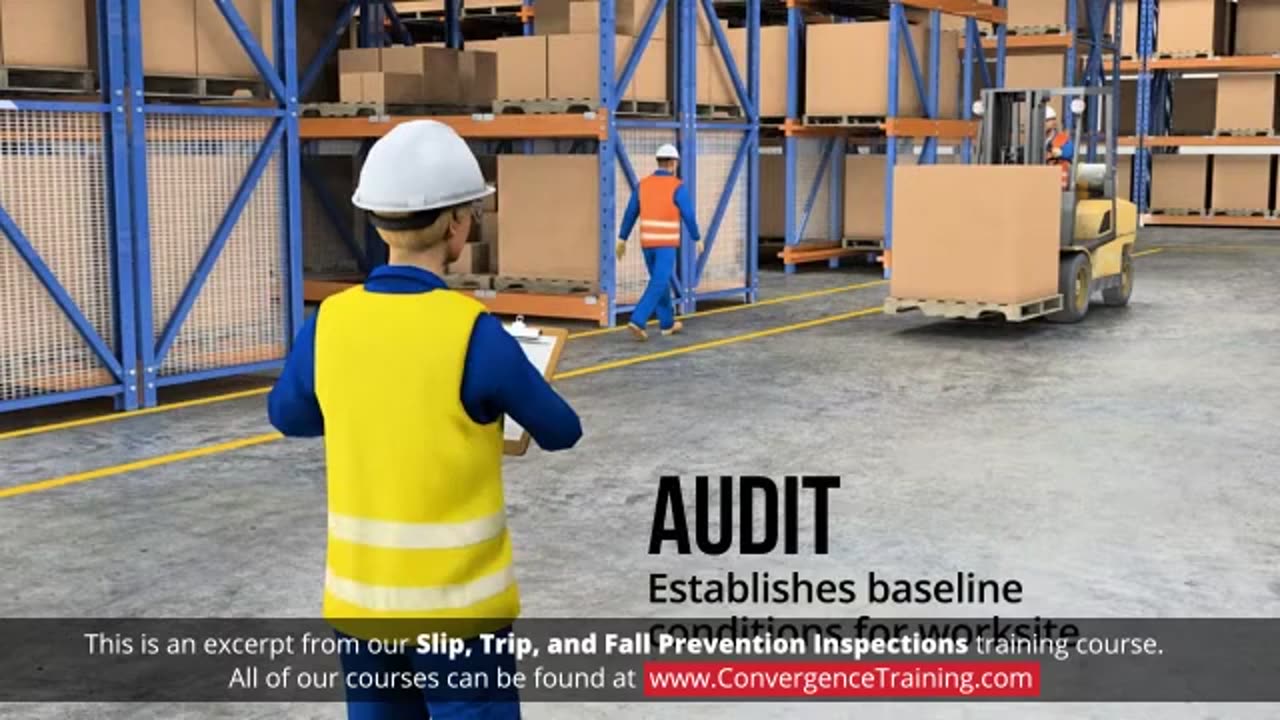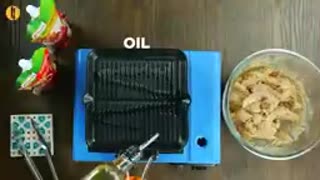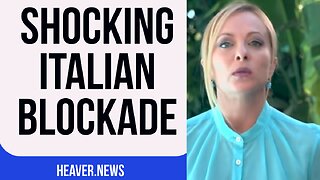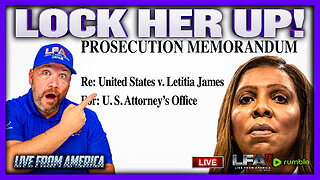Premium Only Content

Slip, Trip, and Fall Prevention Inspections
Slip, trip, and fall prevention inspections are critical for maintaining safety in workplaces, public spaces, or even private properties. They focus on identifying hazards and implementing measures to reduce the risk of accidents. Here's an overview of the inspection process and key components:
---
### **Key Areas to Inspect**
1. **Flooring and Walking Surfaces**
- Look for cracks, uneven surfaces, loose tiles, or worn carpets.
- Ensure anti-slip mats are present in wet or oily areas.
- Verify the proper installation of slip-resistant flooring in high-risk areas.
2. **Housekeeping Practices**
- Inspect for clutter, such as tools, cords, or debris, in walkways.
- Ensure all spills or leaks are promptly cleaned and signage is in place.
3. **Lighting**
- Ensure adequate lighting in stairwells, walkways, and other high-traffic areas.
- Replace burnt-out bulbs and repair broken fixtures.
4. **Staircases and Handrails**
- Check for secure, continuous handrails and ensure stair edges are clearly marked.
- Inspect for loose steps, carpets, or handrail damage.
5. **Wet Areas**
- Inspect bathrooms, kitchens, and entryways for water or condensation.
- Ensure floor drains are functional, and wet floor signs are available.
6. **Outdoor Areas**
- Examine sidewalks, parking lots, and entryways for cracks, potholes, or ice buildup.
- Confirm that outdoor lighting and drainage systems are effective.
7. **Ladders and Elevated Workspaces**
- Verify ladders and scaffolding are in good condition and securely placed.
- Ensure workers are trained on proper usage and follow safety protocols.
---
### **Inspection Checklist Example**
- Are floors dry, clean, and free from obstructions?
- Are wet floor signs available and in use when needed?
- Is lighting adequate in all areas?
- Are steps, stairs, and handrails in good condition?
- Are cords and cables properly secured and not crossing walkways?
- Are entrances and exits free of tripping hazards?
---
### **Preventive Measures**
1. **Policies and Training**
- Conduct regular training for employees on identifying and mitigating slip, trip, and fall hazards.
- Create a safety policy for reporting and addressing hazards.
2. **Signage and Barriers**
- Use clear, visible signs to warn of temporary hazards (e.g., wet floors, maintenance work).
- Install barriers or guards around permanent hazards.
3. **Routine Inspections and Maintenance**
- Schedule regular inspections to proactively identify hazards.
- Address maintenance issues immediately to prevent accidents.
4. **Equipment and Supplies**
- Provide slip-resistant mats, footwear, and cleaning equipment.
- Ensure ladders and other tools meet safety standards.
---
Would you like help designing a detailed inspection form or checklist?
-
 1:35
1:35
HSESafetyInformation
7 months agoMutton Chops two ways- baked & grilled Recipe by Food Fusion (Eid Recipe)
67 -
 LIVE
LIVE
Rebel News
40 minutes agoRebels on the ground for ostrich cull, New hate crime bill, Ford on homeless crisis | Rebel Roundup
358 watching -

Michael Heaver
8 hours agoItaly Suffers Extreme BLOCKADE
122 -
 1:59:09
1:59:09
Steven Crowder
4 hours agoWe're Done Apologizing: Trump Torches Indian H-1B Visas & The United Nations
295K258 -
 43:39
43:39
The Rubin Report
2 hours agoHost Goes Quiet as Press Sec Destroys Jimmy Kimmel Narrative w/ Facts in Under 1 Minute
20.7K15 -
 LIVE
LIVE
Side Scrollers Podcast
2 hours agoKimmel RETURNS + Twitch University + More! | Side Scrollers
370 watching -
 LIVE
LIVE
The Mel K Show
2 hours agoMORNINGS WITH MEL K Defining Liberty: Where the Constitution Stands in a Surveillance State 9-23-25
751 watching -
 LIVE
LIVE
The Shannon Joy Show
2 hours agoFree Speech, Free Markets & The Political Weaponization Of Charlie Kirk. Live With Matt Kibbe
210 watching -
 LIVE
LIVE
LFA TV
14 hours agoBREAKING NEWS ALL DAY! | TUESDAY 9/23/25
4,084 watching -
 35:28
35:28
Grant Stinchfield
1 hour agoTylenol Tied to Autism? Or is it a Convenient Scapegoat?
5.02K4